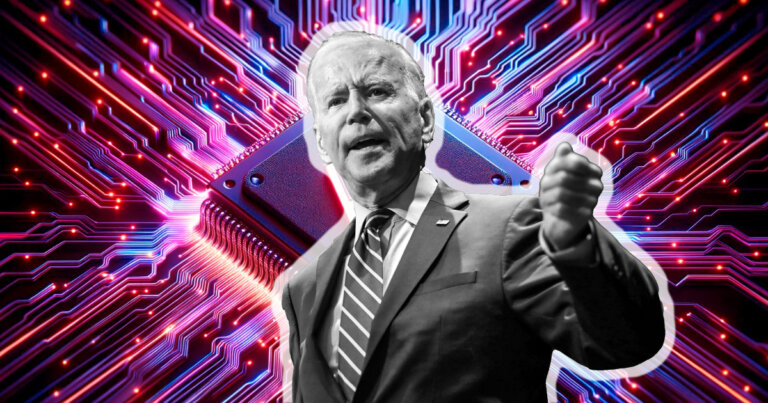 White House issues executive order on AI risk management
White House issues executive order on AI risk management White House issues executive order on AI risk management
President Biden's order consists of a sweeping set of safety procedures designed to protect against runaway risks.

Gage Skidmore / CC BY-SA 2.0 / Wikimedia. Remixed by CryptoSlate
President Joe Biden has issued an executive order focusing on the safety, security, and trustworthiness of artificial intelligence (AI). The directive outlines new standards for AI and mandates several measures aimed at mitigating potential risks associated with AI systems.
Under the new order, developers of powerful AI systems will be required to share safety test results and other essential information with the U.S. government. This requirement is in line with the Defense Production Act and applies to companies developing any foundation model that poses a serious risk to national security, economic security, or public health and safety.
The National Institute of Standards and Technology is directed to develop standards, tools, and tests to ensure AI systems are safe, secure, and trustworthy. The order also establishes the AI Safety and Security Board, which will apply these standards to critical infrastructure sectors.
AI’s role in creating fraudulent and deceptive content is addressed in the order. The Department of Commerce is tasked with developing standards and best practices for detecting AI-generated content and authenticating official content. Watermarking and content authentication guidelines will be developed to identify AI-generated content.
In terms of privacy, the executive order calls on Congress to pass bipartisan data privacy legislation. It also prioritizes federal support for the development and use of privacy-preserving techniques, including those that let AI systems be trained while preserving the privacy of the training data.
On the issue of equity and civil rights, the order provides guidance to landlords, federal benefits programs, and federal contractors to prevent the use of AI algorithms from exacerbating discrimination. The executive order also addresses algorithmic discrimination through training, technical assistance, and coordination between the Department of Justice and Federal civil rights offices.
The order recognizes the potential impact of AI on the labor market, outlining principles and best practices to mitigate potential harms and maximize the benefits for workers. It also mandates a report on AI’s potential labor-market impacts.
To foster innovation and competition, the order provides for expanding grants for AI research in vital areas like healthcare and climate change. It also encourages the Federal Trade Commission to exercise its authority to provide small developers and entrepreneurs with access to technical assistance and resources.
The executive order also mandates the development of a National Security Memorandum, which will direct actions on AI and security, to be developed by the National Security Council and White House Chief of Staff.
The international implications of AI are also addressed in the order, with a plan to expand bilateral, multilateral, and multistakeholder engagements on AI. The aim is to establish robust international frameworks for harnessing AI’s benefits, managing its risks, and ensuring safety.
The executive order is a comprehensive directive addressing multiple facets of artificial intelligence from safety to privacy to international cooperation. It sets the stage for further action on AI risk management at the federal level.
























































